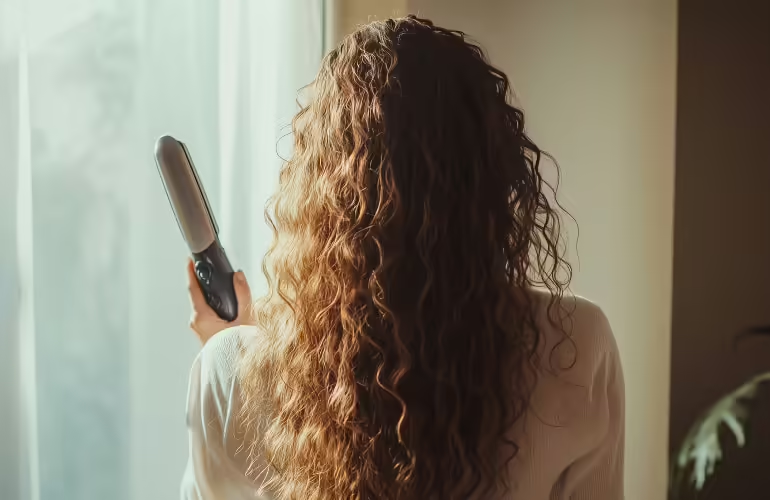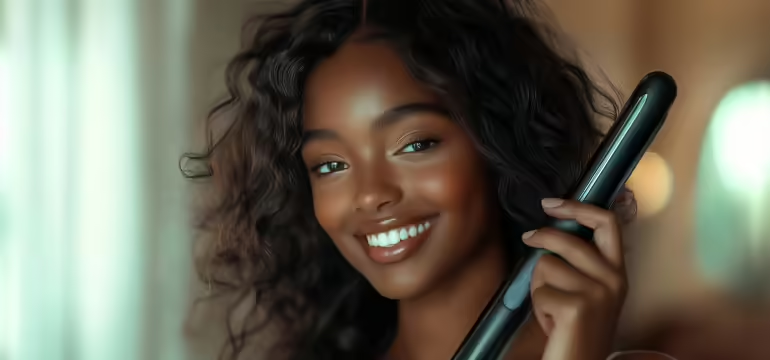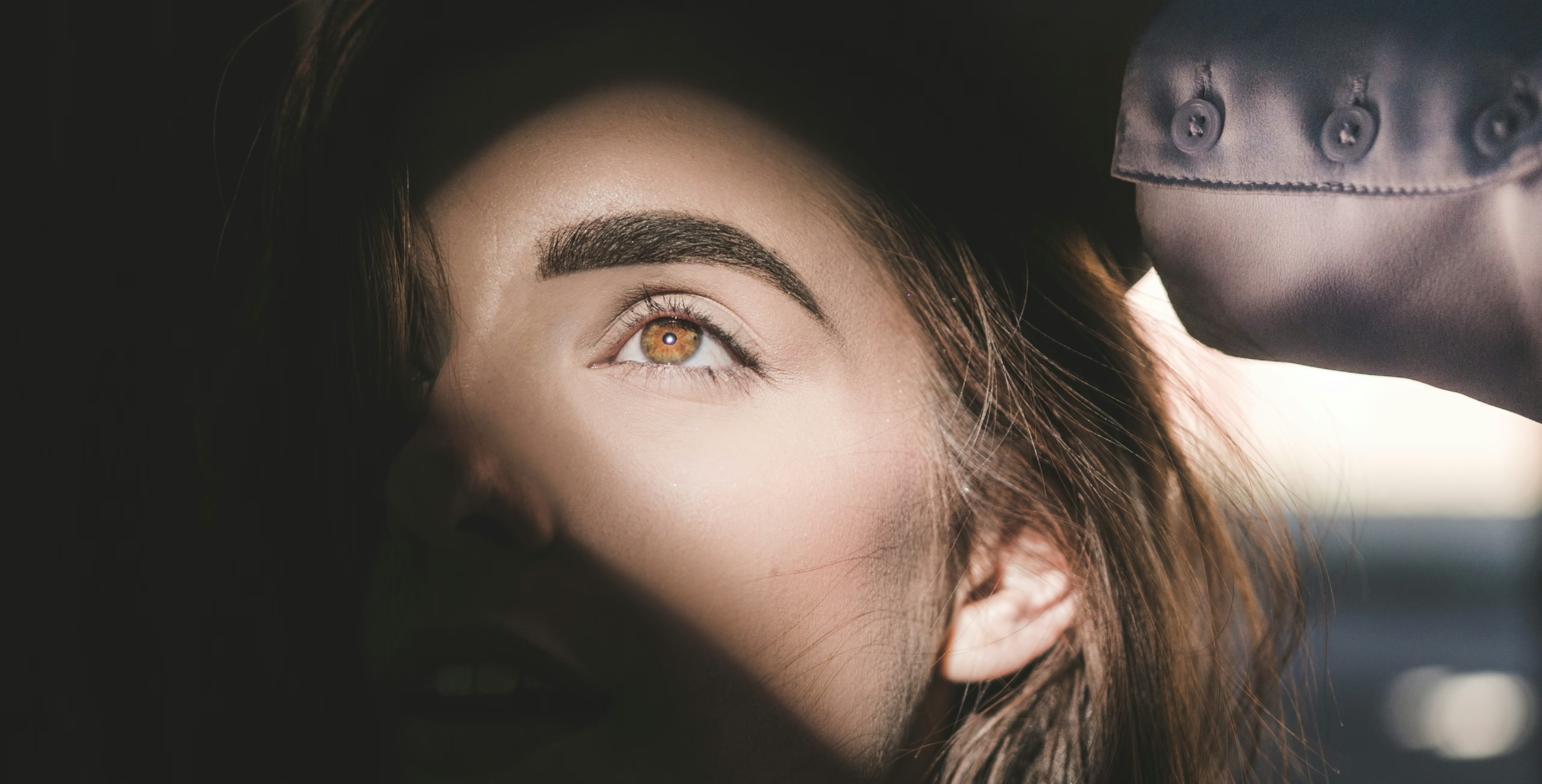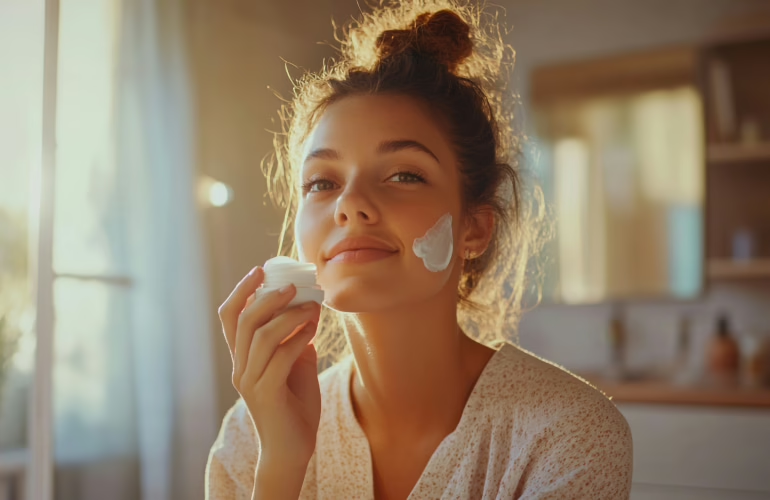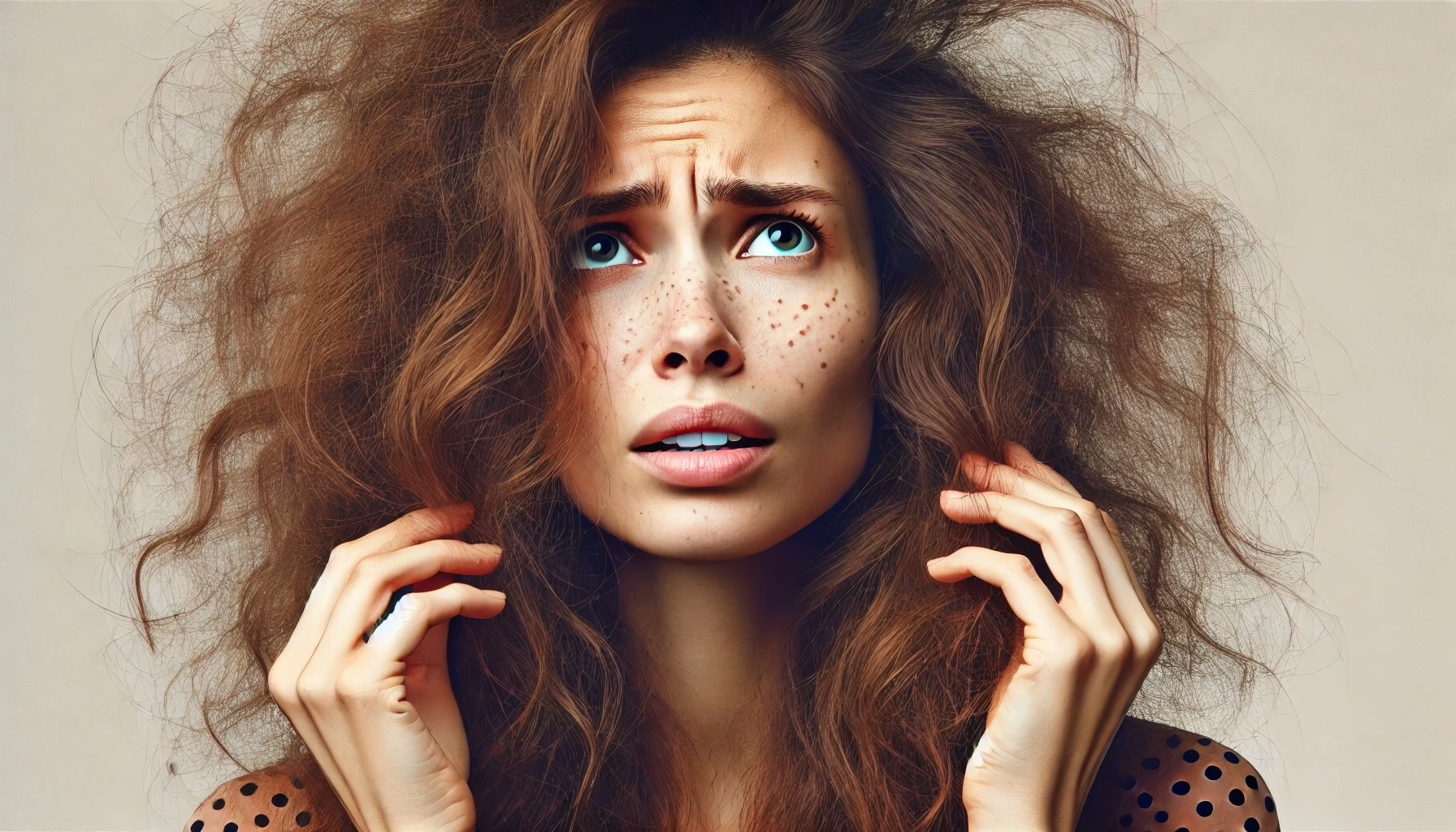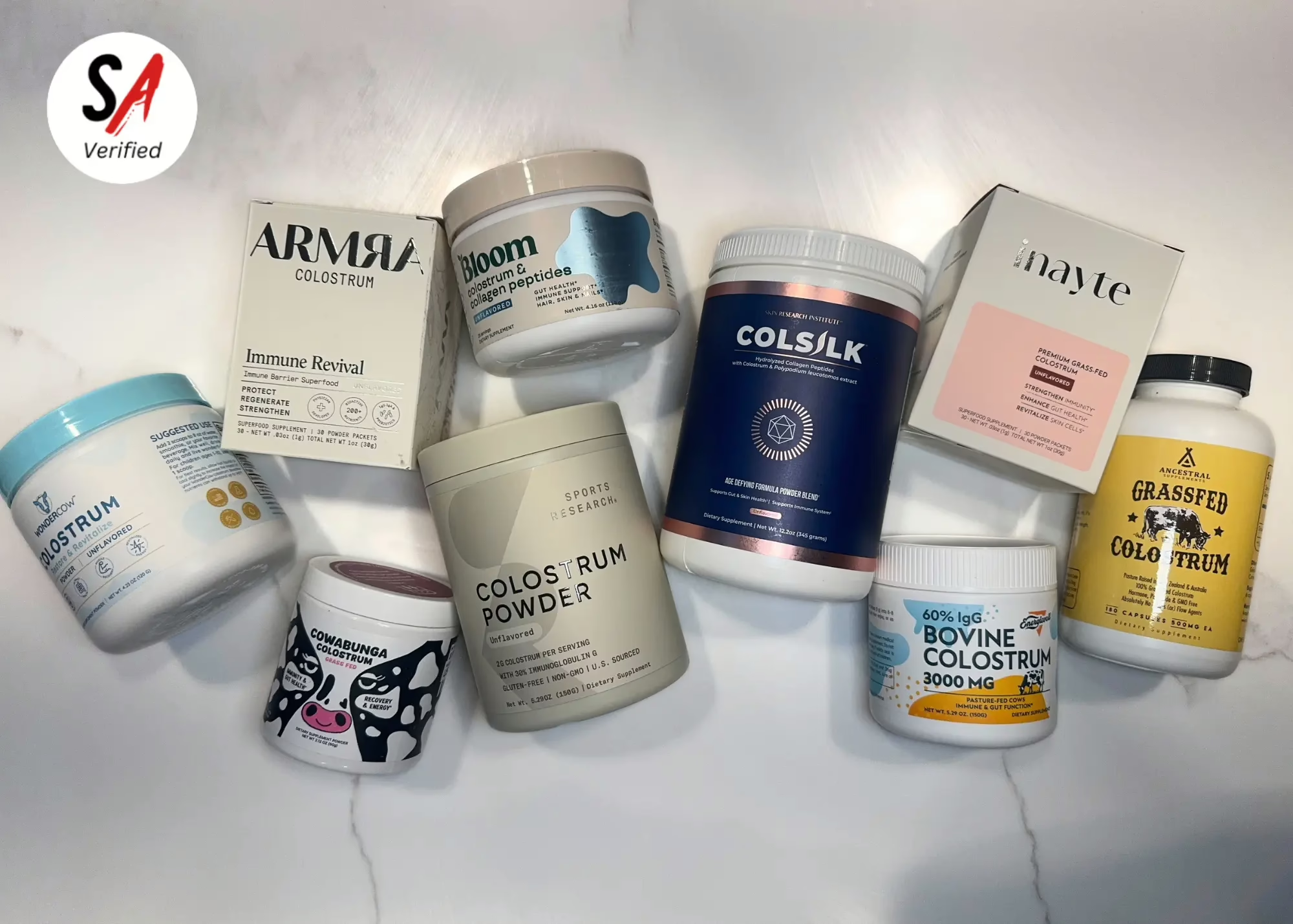Advertising Disclosure
Understanding Curly Hair: The Importance of Choosing the Right Straightener
Finding the perfect straightener for curly hair can feel overwhelming, especially when starting. Many people struggle to get smooth, lasting results with their curly hair. The right hair straighteners can make styling easier and protect your hair from damage. However, natural curls need special care and the tools to look their best.
Take Liza’s experience with her 3C curls; she tried five straighteners before finding the right one. Like many people with curly hair, she dealt with frizz, breakage, and styles that wouldn’t last. Using the wrong good straighteners left her hair damaged and poofy after just one day. But once she found the right tool, her straight styles lasted up to two weeks.
Curly hair has special needs because of its unique pattern and structure. Each curl twists differently, making straightening tricky without the proper technique. Some parts of your hair might have looser waves, while others form tight coils. This mix of patterns needs a straightener for curly hair that can adjust to different textures.
Many people don’t realize that straightening curly hair isn’t just about high heat. The good straighteners combine the right temperature with features that protect your hair’s health. Ready to know all the rules? Read on!
Key Features to Look for in a Hair Straightener for Curly Hair
Shopping for a new hair straightener for curly hair doesn’t have to feel like solving a complex puzzle. Many people get overwhelmed by all the fancy features and technical terms they see online. Let’s simplify this process by focusing on what matters for curly hair.
Think about your morning routine – you need a tool that works quickly and effectively. The right good straighteners can cut your styling time in half. Understanding key features helps you choose a tool that matches your curl pattern and lifestyle needs. Knowing these features will guide you in choosing whether you straighten your hair daily or just for special occasions.
Plate Material and Technology
Different plate materials work better for different hair types. Here’s what you need to know about each option:
Ceramic Plates:
- Heat up evenly. This feature prevents hot spots and ensures consistent straightening results.
- Suitable for fine to medium hair. The gentle heating process protects delicate strands from damage.
- Less likely to cause damage. Ceramic plates distribute heat gradually, maintaining hair’s natural moisture.
- It works well for everyday use. Their reliable performance makes them perfect for regular styling needs.
- Great for beginners. The forgiving nature of ceramic helps you master straightening techniques safely.
The tourmaline hair straightener adds extra benefits:
- Produces negative ions. This technology actively fights frizz while you style.
- Reduces static. Your hair stays manageable and smooth throughout the day.
- Makes hair shinier. The ionic technology seals the cuticle for a natural, healthy glow.
- Helps prevent frizz. The advanced plates keep humidity from ruining your style.
- Works faster than basic ceramic. You’ll spend less time styling and more time enjoying your look.
Titanium Plates:
- Heat up very quickly. It saves precious time during your morning routine.
- Stay hot longer. The consistent temperature helps you achieve even results.
- Best for thick or coarse hair. The powerful heat tames even the most resistant curls.
- Ideal for professional use. Stylists love the speed and reliability of titanium.
- Need careful handling. The intense heat requires proper technique to prevent damage.
Temperature Control and Settings
The best flat iron straightener will have adjustable heat settings to protect your hair from damage. Finding the right straightener for curly hair starts with understanding temperature control. Let’s explore the perfect heat settings for the smoothest results with any hair type.
For Fine Hair:
- Start at 300°F. This gentle temperature protects delicate strands from heat damage. Fine hair burns easily, so starting low helps prevent breakage. The right good straighteners will have precise temperature controls for fine hair.
- Never go above 350°F. Higher temperatures can cause breakage and split ends. Your fine hair might straighten faster, but the damage isn’t worth the speed. Using a hair straightener at too high heat for curly hair can ruin the fine texture.
- Use lower heat for colored hair. It helps preserve your color and prevent fading. Colored fine hair needs extra care because the dye makes it more fragile. Start at 280°F if your hair is both fine and colored.
- Check a small section first. Testing helps you find the perfect temperature for your hair. Try a small piece behind your ear where mistakes won’t show. Good hair straighteners let you adjust settings easily.
- Increase slowly if needed. Gradual adjustments prevent accidental damage. If your hair isn’t straightening, increase by 10 degrees at a time. Listen to your hair – the heat is too high if it sizzles.
For Medium Hair:
- Begin around 350°F. This temperature effectively straightens without excessive heat. Medium hair can handle more heat than fine hair. Using a quality curling straightener at this temperature gives perfect results.
- Maximum 375°F. Stay within this range to maintain hair health. Even medium hair can become damaged from too much heat. The best straighteners will maintain a consistent temperature at this level.
- Test on a small piece. Every hair type responds differently to heat. Some medium hair might need less heat, while others need the full 375°F. Your natural texture determines your perfect temperature.
- Adjust based on results. Your hair will tell you if you need more or less heat. If your style doesn’t last, you might need more heat. A target hair straightener should let you make small adjustments.
- Use heat protection always. This extra step prevents long-term damage. Think of it like sunscreen for your hair. Never skip this step, even if you’re in a hurry.
For Thick Hair:
- Start at 375°F. Coarse hair needs higher heat to achieve smooth results. Thick hair has strong strands that can handle more heat. Using a small hair straightener might require more passes at this temperature.
- Don’t exceed 400°F. Even thick hair can become damaged above this temperature. It is the absolute maximum for any hair type. Quality travel hair straighteners should still reach this temperature safely.
- Watch for smoking or burning. These signs indicate you need to lower the heat. If you smell burning, stop immediately and check your heat setting. Your hair should never smoke.
- Lower heat if the hair feels dry. Healthy hair should feel smooth, not brittle. Run your fingers through your hair after straightening. If it feels like a straw, reduce the heat.
- Take smaller sections. It ensures even heat distribution throughout thick hair. Bigger sections might seem faster, but they need more heat passes. Smaller sections give better results.
Remember, finding your perfect temperature might take some trial and error. Start low and increase slowly until you find what works. A good straightener for curly hair will make this process easier and safer for your hair.
Top Hair Straighteners for Curly Hair: Reviews and Recommendations
When choosing the right curling straightener, consider these options for different needs:
High-End Options:
- Better heat control. Professional-grade temperature settings give you precise control.
- Longer-lasting results. Quality materials help your style stay smooth all day.
- More durable materials. These tools withstand frequent use without losing performance.
- Professional warranty. Extended coverage protects your investment.
- Salon-quality results. You’ll achieve professional-looking styles at home.
Mid-Range Choices:
- Good balance of features. These tools offer the most important professional features.
- Reliable performance. Consistent results make styling easier every day.
- Decent warranty coverage. You’re protected against common issues and defects.
- User-friendly controls. Simple settings help you achieve great results quickly.
- Consistent heat. Even temperature distribution prevents damage and ensures smooth results.
A quality target hair straightener might cost more but provides value through:
Budget-Friendly Features:
- Simple temperature control. Basic settings still give you styling flexibility.
- Ceramic coating plates. This technology helps protect hair from damage.
- Safety auto-shutoff. Peace of mind comes standard with this feature.
- Decent cord length. Longer cords make styling more convenient.
- Lightweight design. Easy handling helps you achieve better results.
A small hair straightener works well for:
- Touch-ups. Perfect for quick fixes throughout the day.
- Travel needs. The compact size fits easily in your bag.
- Quick fixes. Ideal for managing flyaways and frizz.
- Bangs and edges. Precise control for smaller areas.
- Short hairstyles. Maneuverability helps style shorter lengths.
Tips for Straightening Curly Hair Effectively and Safely
Learning how to keep curly hair straight requires proper preparation:
Prep Steps:
- Wash hair with smoothing shampoo. Clean hair straightens more effectively.
- Use a moisturizing conditioner. Well-hydrated hair responds better to heat styling.
- Apply leave-in treatment. This extra protection prevents heat damage.
- Dry hair completely. Wet hair can become damaged from direct heat.
- Section hair carefully. Organized sections ensure even straightening.
Styling Tips:
- Use heat protectant spray. This barrier prevents direct heat damage.
- Work in small sections. Thorough straightening requires attention to detail.
- Keep the iron moving. Constant motion prevents heat damage.
- Check the temperature often. Maintaining the right heat level ensures the best results.
- Don’t rush the process. Taking your time leads to longer-lasting results.
The right curling iron for curly hair helps with the following:
- Touch-ups between straightening. Quick fixes keep your style looking fresh.
- Creating different styles. Versatility helps you change up your look.
- Fixing problem areas. Target specific sections that need attention.
- Adding body and movement. Create natural-looking volume where needed.
- Maintaining your look. Regular maintenance keeps your style looking professional.
Maintenance and Care
Using the right straightener for curly hair is the first step to beautiful straight styles. Your straightened hair needs daily attention to stay smooth and healthy.
Daily Care:
- Use dry shampoo. It keeps your style fresh between washes and prevents oil buildup at the roots. Many people wash too often, which can make hair frizzy and dry.
- Wrap hair at night. Use a silk scarf or bonnet to protect your style while you sleep. Cotton pillowcases can rough up your hair and create frizz overnight.
- Avoid excessive touching. Your hands carry oils that can make your straight style look greasy and limp. Keep your hands away from your hair throughout the day.
- Stay away from humidity. Using good hair straighteners won’t matter if you don’t protect your style from moisture. Use anti-humidity sprays when the weather gets damp.
- Use light-holding products. Heavy creams and oils can weigh down your style and attract dirt. Choose lightweight sprays instead of thick serums.
Weekly Care:
- Deep condition hair. Give your hair extra moisture once a week to prevent heat damage. It helps keep your straight style looking smooth and healthy.
- Use protein treatments. Strong hair holds straight styles better and resists damage from heat styling. Do this treatment before using hot tools.
- Check for damage. Look for split ends and breakage weekly to catch problems early. It helps you know when to adjust your heat settings.
- Trim split ends. Get regular trims every 6-8 weeks to maintain healthy-looking hair. Split ends can travel up the hair shaft and cause more damage.
- Plan styling schedule. Give your hair breaks between straightening sessions to prevent damage. Try to limit heat styling to 2-3 times per week.
Conclusion: Finding the Perfect Straightener for Your Curls
Choose the best straightener for curly hair based on the following:
Personal Needs:
- Styling frequency. Daily use requires more durable tools.
- Available time. Your schedule affects which features matter most.
- Budget considerations. Quality tools are worth the investment.
- Travel requirements. Portability might be important for your lifestyle.
- Storage space. Consider where you’ll keep your styling tools.
Hair Type Considerations:
- Curl pattern. Tighter curls need different features than loose waves.
- Hair thickness. Adjust your tool choice based on hair density.
- Treatment history. Processed hair requires gentler tools.
- Damage level. Compromised hair needs extra protection.
- Styling goals. Your desired results guide tool selection.
Remember, finding the right tool takes time and patience. Test different options and techniques to discover what works best for your unique hair type and lifestyle.
